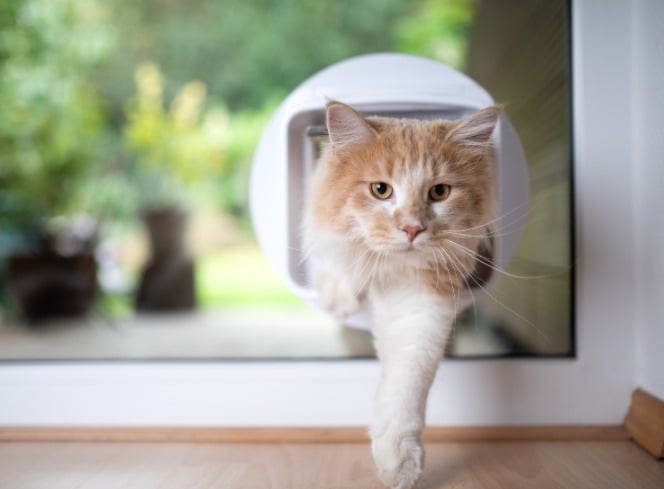Cats have a reputation for being independent and even aloof, leading many to believe that training them is a futile endeavour. However, can you train cats? Absolutely! Contrary to popular belief, cats are intelligent creatures capable of learning a variety of commands and tricks.With patience, consistency, and the right approach, you can teach your cat impressive behaviours that not only entertain but also strengthen the bond between you and your feline friend.
In this guide, we'll explore how to train your cat, delve into effective methods for training kittens and adult cats alike, and highlight some top tricks for your clever companion.
Can You Teach Cats? Understanding Feline Behaviour
Before diving into training cats, it's essential to understand how they think. Cats are natural learners, but their motivation differs from dogs. While dogs often aim to please their owners, cats are more driven by personal benefit—think treats, playtime, and praise.
Why Train Your Cat?
- Enhance Communication: Training improves the way you and your cat communicate.
- Mental Stimulation: Learning new tricks keeps your cat's mind sharp.
- Behavioural Benefits: Training can correct unwanted behaviours and promote positive ones.
- Strengthen Bond: Shared activities enhance your relationship with your cat.
How to Train a Cat: Getting Started

1. Choose the Right Time
Select a quiet time when your cat is alert but not distracted. Training a cat requires focus, so minimise background noise and potential interruptions.
2. Use Positive Reinforcement
Cats respond best to positive reinforcement. Reward desired behaviours with treats, praise, or affection. Avoid punishment, as it can lead to fear and aggression.
3. Keep Sessions Short
Cats have short attention spans. Limit training sessions to 5-10 minutes to keep your cat engaged and prevent frustration.
4. Be Consistent
Use the same commands and cues consistently. Consistency helps your cat understand what you expect.
5. Understand Your Cat's Motivations
Some cats are food-motivated, while others respond to toys or affection. Discover what your cat values most to make training more effective.
Top Tricks to Teach Your Cat

Trick 1: How to teach a cat to sit:
- Hold a Treat: Hold a treat or a toy close to your cat's nose.
- Raise the Treat: Slowly move it over their head toward their back.
- Wait for the Sit: As your cat follows the treat or toy, they'll naturally sit.
- Reward: As soon as they sit, say "sit," and give them the treat or toy.
Trick 2: High Five
- Present Your Hand: Hold your hand at your cat's chest level.
- Encourage Pawing: Wait for your cat to lift a paw to touch your hand.
- Reward: When they touch your hand, say "high five," and offer a treat.
- Repeat: Practice regularly to reinforce the behaviour.
Trick 3: How do you train your cat to come to you?
- Choose a Cue: Use your cat's name or a specific word like "come."
- Use Positive Associations: Call them during meal times to create a positive link.
- Reward Approaches: Every time your cat comes to you, reward them.
- Gradual Distance Increase: Start close and gradually increase the distance.
Trick 4: Training a cat to walk on a lead:
- Introduce the Harness: Let your cat sniff and explore the harness.
- Wear Indoors: Have your cat wear the harness without the lead indoors.
- Attach the Lead: Once comfortable, attach the lead and let them drag it.
- Guided Walks: Gently hold the lead and follow your cat around the house.
- Outdoor Exploration: Move to quiet outdoor areas when ready.
Trick 5: Ring a Bell for Food
- Show the Bell: Let your cat investigate the bell.
- Encourage Interaction: Smear a small amount of wet food on the bell.
- Associate with Feeding: Ring the bell before feeding time.
- Reward Bell Rings: When your cat rings the bell, offer food.
Training Kittens vs. Adult Cats

Training Kittens
- More Adaptable: Kittens are in a critical learning phase and can absorb new behaviours quickly.
- High Energy: Use play to your advantage during training.
- Short Sessions: Keep sessions even shorter due to their limited attention span.
Training Adult Cats
- Set in Their Ways: May take longer to unlearn old habits.
- Patience is Key: Consistency and patience are crucial.
- Use Strong Motivators: Find what truly excites your adult cat.
Common Challenges and Solutions
My Cat Isn't Interested in Training
- Try Different Rewards: Experiment with various treats or toys.
- Adjust Timing: Train before meal times when they're more food-motivated.
My Cat Gets Distracted Easily
- Eliminate Distractions: Choose a quiet room away from other pets or loud noises.
- Shorten Sessions: Keep training brief and engaging.
How Can I Train My Cat? Tips for Success
- Start Simple: Begin with easy tricks before moving to complex ones.
- Use Clicker Training: A clicker can precisely mark desired behaviours.
- Practice Regularly: Consistency reinforces learning.
- Be Patient: Every cat learns at their own pace.
The Benefits of Training Cats
Training cats isn't just about teaching them tricks; it's about enriching their lives and enhancing your relationship. It provides mental stimulation, reduces behavioural issues, and can make handling your cat easier during vet visits or grooming.
Conclusion
So, how do you train a cat? With understanding, patience, and positive reinforcement. Whether you're teaching basic commands or fun cat tricks, the key is to make training enjoyable for both you and your feline friend. Remember, every small step is progress.
Ready to embark on this rewarding journey? Start with simple tricks and gradually challenge your clever cat. Share your training experiences and any questions you have—we're here to support you every step of the way. Shop tasty cat treats for training here at Lords & Labradors, we have options for even the fussiest of felines.






















































.jpg?v=1727265701783&options=)









































